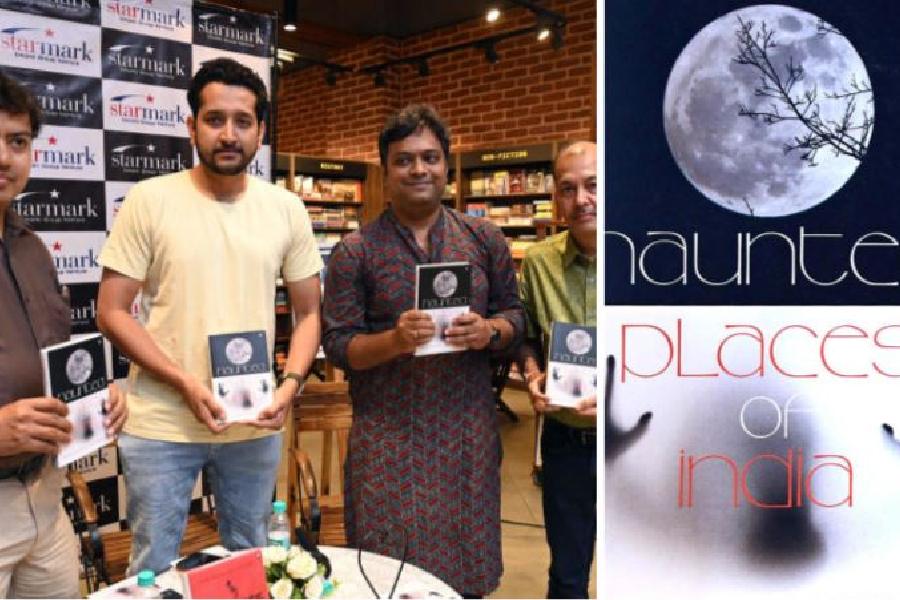A recent late afternoon witnessed a spooky ambience at Starmark South City Mall as actor Parambrata Chatterjee, writer Caesar Bagchi and teacher-researcher Saikat Banerjee sat down with author Riksundar Banerjee to discuss his latest book Haunted Places of India that has opened up to positive reviews.
Banerjee’s book is neither strictly academic nor fully unacademic and contains stories from 40 places across the country and many from Bengal. Addressing a question on why the book appeals, Bagchi asserted that the book has tried to find the answers to the myths surrounding ghosts as in India ghosts come in variations. He also declined to treat Banerjee’s latest offering as just another horror storybook and as the conversation slowly veered towards the idea of the past and what it is in the context of the term “bhoot”, Chattopadhyay had an interesting take on the ghostly matter. “There are different ways and rituals of cremation, and then we wonder what happens to the soul after that. This is where ghostly tales start. Different authors give it different treatments. Take Shirshendu Mukhopadhyay’s funny, friendly ghosts, for example, and then there you have horror stories penned by Swapan Kumar, which would highly disturb me as a child. These ghosts have unfinished business in the world. And they keep coming back from an emotional basis, be it aggression or a sense of revenge or sorrow or simply an attachment to the material world. Wish fulfilment forms a common trope of storytelling in horror cinema,” said the actor who has been part of many ghost-based films.
The actor also talked about the nuance of the Indian interpretation of ghosts and how it differs from the Western concept. “The horror literature in our country and that in the West has a fundamental difference. Here, ghost belongs to a grey area as opposed to the clear demarcation of the good and the evil in the West, especially the narrative that came into being after Christianity came into existence. In our culture, we have some old concepts that stand somewhere in the middle, between the good and the evil. Let’s say tantra shastra... or dakini and jogini who assume power when goddess Kali becomes enraged and unleashes them upon us. Islam acknowledges the existence of Jins and a parallel universe. I think Indian film-makers need to embrace these ideas”.
The author himself dismissed the existence of ghosts. “I feel there is no ghost, but there is definitely ghostliness. Ghostliness makes us aware of our senses. And nostalgia is one base of horror storytelling. You would find a variety of backgrounds of the ghosts as I have told their stories in this book. And that is quite reflective of class differences prevailing in our society. The book contains dark stories of Lambhi Dahi mines and you will also find the spooky tales of the abandoned village of Kuldhara or a room in a college hostel. For the Madras Christian College story, I had spoken to alumni, local journalists and police officials. Make no mistake, my book is not purely academic in nature. I have rather adopted a light-hearted adda style,” said Banerjee.
Talking to The Telegraph about the relevance of horror stories in the 21st century and how they have evolved over the years, Bagchi said: “They have evolved a lot in terms of storytelling, topics and periphery. People love ghost stories and the popularity is only increasing day by day.”
Pictures: Rashbehari Das
